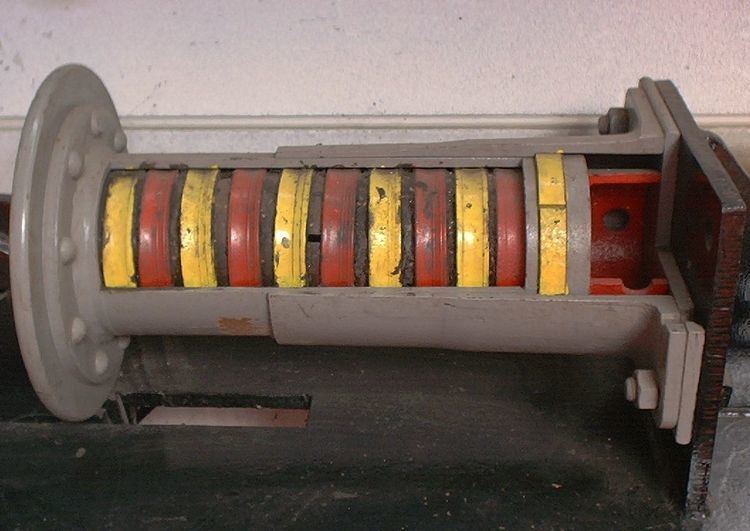 | ||
A buffer is a part of the buffers-and-chain coupling system used on the railway systems of many countries, among them most of those in Europe, for attaching railway vehicles to one another.
Contents
Fitted at the ends of the vehicle frames, one at each corner, the buffers are projecting, shock-absorbing pads which, when vehicles are coupled, are brought into contact with those on the next vehicle. The draw chain used between each pair of vehicles includes a screw which is tightened after coupling to shorten the chain and keep the buffers pressed together. Such is known as a 'screw coupling'. Historically, coupling chains were no more than that, a short length of heavy chain (typically three links long) with no adjustment. These would result in a 'loose-coupled train' in which the buffers of adjacent vehicles would only touch when the coupling chain was fully slack, such as when being pushed or going down hill.
Although the buffers in the very earliest days of railways were rigid (dumb buffers), they soon came to be spring-loaded, while those fitted to modern locomotives and rolling stock incorporate oleo-pneumatic shock absorbers.
Shape
The original English buffers were the same on each side, so that there was a small tendency for buffers to slide off each other. German railway buffers are flat on one side and convex on the other to reduce this tendency to slide off.
Buffer stops
Dead-end sidings are often fitted with buffer stops to prevent vehicles running off the end of the track. These may consist of a simple transverse beam fixed at buffer height but the buffer stops at passenger stations can be elaborate hydraulic installations capable of absorbing a considerable amount of energy.
Friction buffer stops are clamped 'loosely' to the rails, and when hit by a train that fails to stop correctly, move with the train for perhaps 30 m (98 ft) scraping the top of the rails, which absorbs considerable energy.
Collisions
In violent collisions, the buffers of adjacent carriages may become displaced relative to one another, allowing the carriages to telescope which is very dangerous. The risk of this can be reduced if the buffers (or fake buffers) have corrugations that grip each other and prevent the buffers becoming displaced and so leading to telescoping.
